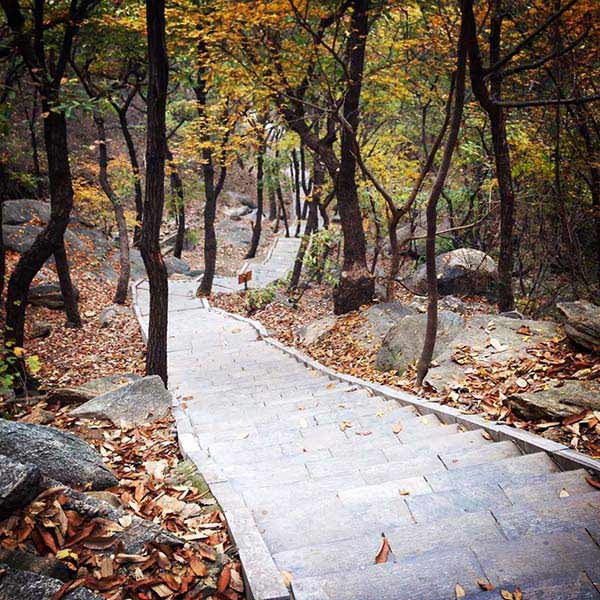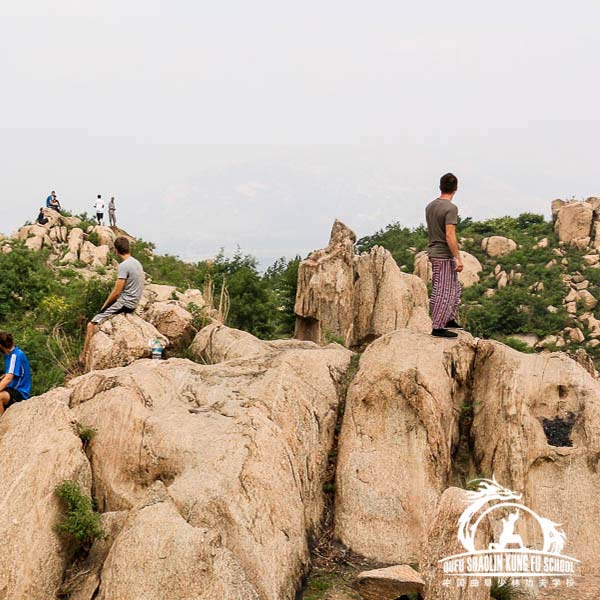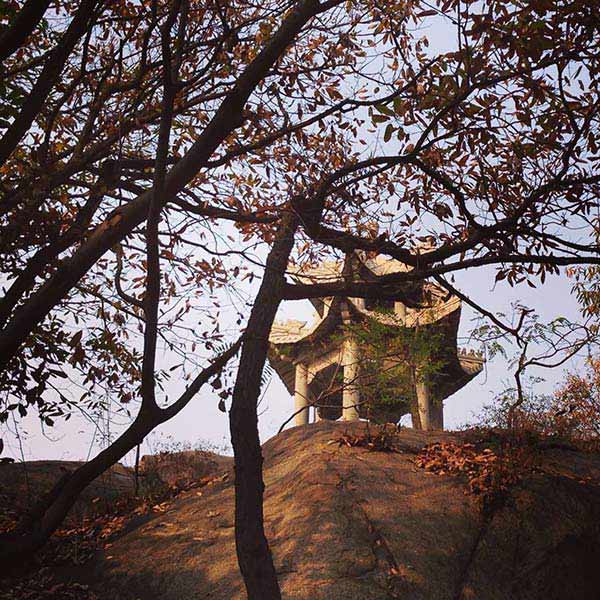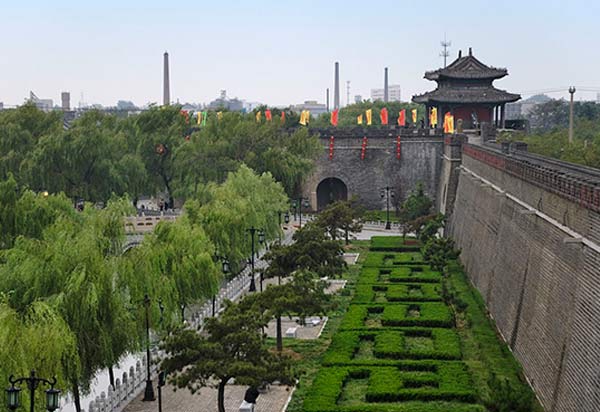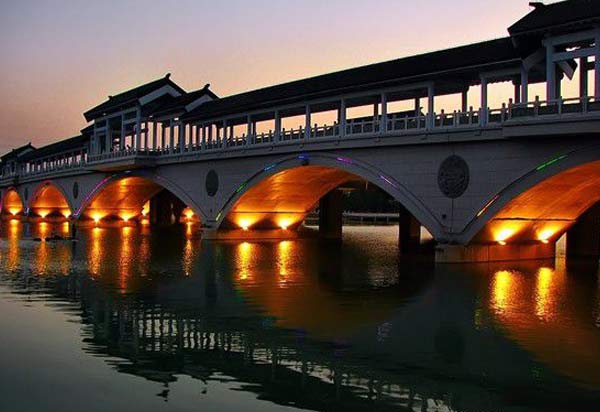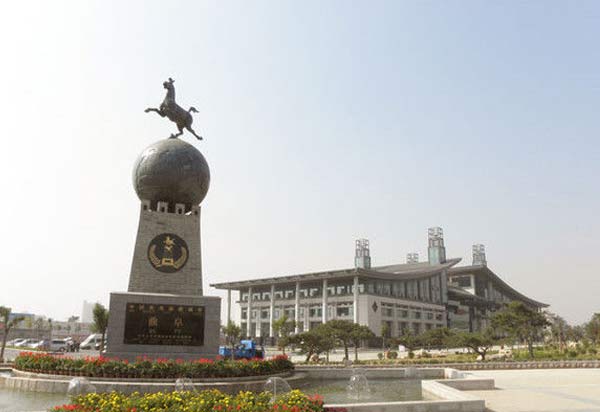Location
Apply now
The school is located in Shimen Mountain National Park, 30 minutes by bus from the city of Qufu.
Qufu city is located around 500 km from the south of Beijing, 750 km from the north of Shanghai in the providence of Shandong. It covers around 900 sq km and has a population of 630,000 people.
The exact address of the school is: Shimen Mountain National Park, Qufu City, 273100, Shandong Province, China.
Check the map below for more details.
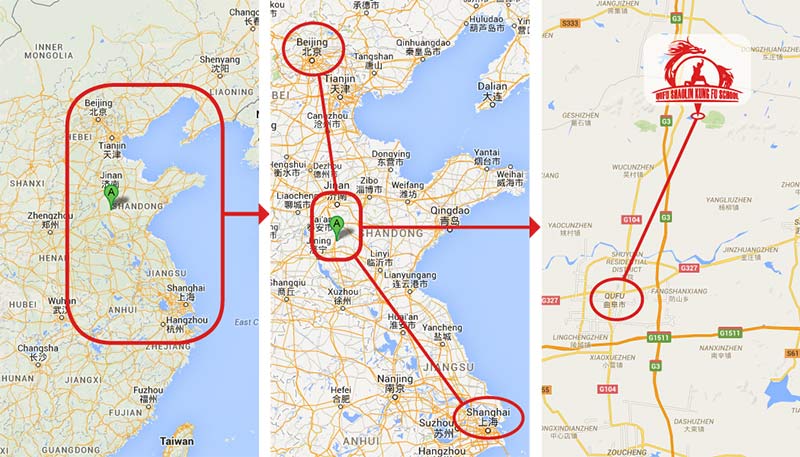
Shimen Mountain National Park is one of the famous mountains of Qufu. Shimen mean “stone gate”, it gets this name because of the two hills that look like a gate opening to all the guests. It is called “the hall of three beliefs (Buddhism, Taoism and Confucianism).” There are still historic statues of the three belief systems on the mountain and it is home to Shimen (Buddhist) Temple. It is said to be where the Tang Dynasty’s greatest poets Libai and Dufu visited and where they wrote some of their enchanting poems in posterity. The famous dramatist Kong Shangren, a decendant of Confucius is also thought to have wrote the “Peach Flower Fan” here in the Qing Dynasty.

Qufu City
Qufu is the hometown of Confucius, the great philosopher, statesman and educator, considered to be one of the ten great sages of history. In Qufu, the Temple of Confucius, Confucius' (Kong) Family Mansion and the Cemetery of Confucius have all been designated by UNESCO as World Heritage Sites. Qufu is also listed by the Chinese State Council in the first group of 24 national famous cities of historical and cultural relics. Due to this, there isn’t any heavy industry in and near Qufu. Therefore, we are able to enjoy a small and very traditional-like city with comparatively good air quality.
*Tourist attractions in and around Qufu City
The Temple of Confucius
The Temple of Confucius' dates back to 478 BC, which makes it one of the three largest ancient architectural sites of China. It was built in honor of Confucius a year after his death and would later evolve to its current size. It is traditionally visited as a way to pay respects to Confucius, whose teachings and philosophy came to have a deep and profound influence on Chinese and Eastern culture. The temple is also revered for its many cultural relics, its beautiful architecture and the calligraphy and sculptures that mark the various dynasties of it's history.Confucius Family Mansion
The home of Confucius' son and descendants, Confucius' Family Mansion spans 160,000 sq km and was once the largest private rural estate of China.
Confucius Family Cemetery
The Confucius Family Cemetery is where the ancestors of Confucius are buried. The cemetery holds the longest line of family descendants in the world. The grounds are surrounded by a natural botanical area covered by over 10,000 mature trees.
It is said that disciples of Confucius planted many rare trees here from across China in honor of his passing away. It is thought to be the largest family cemetery in the world holding more than 10,000 tombs.
Qufu Cultural Festival of Confucius
Qufu's Cultural Festival of Confucius marks the birthday of Confucius and lasts between September 26th and October 10th. It draws local and international visitors from around China and the rest of the world. During the festival, there is ancient music, dance and theatrical performances and various events of celebration to commemorate Confucius.
Hill Ni
Ni Hill is a national forest park and the birthplace of Confucius. It is in a mountainous location with water streams flowing down from the mountain above and home to the Confucius Academy.
Jiuxian Mountain
With beautiful scenery, Jiuxian Hill is the former site of the Chang Shao War between Lu and Qing state later in the Spring and Autumn period. There is a famous painted stone on the mountain representing a portrait of Confucius at lecture.
Confucius Research Institute
The Confucius Research Institute is a large museum that chronicles and researches into the life of Confucius. It contains relics from the Kong (Confucius) Family Mansion.
Confucius Six Arts City / Confucius Hometown Garden
This is a theme garden displaying the Six Arts of Confucius (propriety, music , archery , charactering, writing and mathematics) and the influence of Lu culture.
The Analects Tablet Garden
The Analects were the teachings of Confucius put together by his students after his passing away. Calligraphy and stone carvings of his words are illustrated throughout the garden in honor of Confucian style and culture.
Shouqiu, The Mausoleum of Shaohao
Shouqiu is where the Yellow Emperor was born. His son, Shaohao is thought to have been the first of the five Emperors of ancient China. The tomb of Shaohao lies here and is also known as 'the Oriental Pyramid'
The Temple of the Duke of Zhou
The Temple of the Duke of Zhou is a place of national heritage land where the first sage Duke Zhou is traditionally worshipped.
The Temple of Yan
Yan Temple is the temple of Yanhui , the disciple of Confucius.
Nine Dragon Hill (Han Dynasty Tombs)
It is home of the large scale tomb of Emperor Lu of the Han Dynasty. In the Spring and Autumn period, Qufu served as the capital of the State of Lu.
Learn More about Qufu:
You can find ours here Terms of Service, our Data protection and our Cookie-Richtlinie


